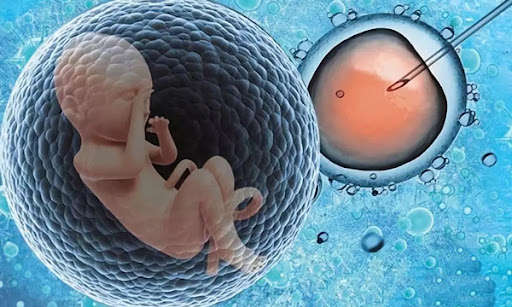The birth of the first test-tube baby in the UK in 1978 revolutionized reproductive medicine. Today, In-Vitro Fertilisation (IVF), often referred to as the “test tube baby” process, has become a widely accepted Assisted Reproductive Technique (ART) for couples facing infertility issues.
What is a Test Tube Baby?
The term “test tube baby” was initially coined for babies born through artificial insemination, but now it primarily refers to IVF, where fertilization occurs in a laboratory. In IVF, a woman’s egg and a man’s sperm are harvested, fertilized outside the body, and the resulting embryo is transferred to the woman’s uterus for pregnancy.
Who Needs IVF Treatment?
Infertility affects a growing number of couples worldwide, including 10%-15% of married couples in India. IVF is typically recommended for couples facing:
Blocked or Damaged Fallopian Tubes: Eggs travel through the fallopian tubes to the uterus. If these tubes are damaged, fertilization cannot occur naturally.
Male Factor Infertility: Low sperm count or poor sperm quality may necessitate IVF.
Ovulation Disorders: Women who do not ovulate regularly produce fewer eggs, making conception difficult.
Endometriosis: A condition where the uterine lining grows outside the uterus, impacting fertility.
Unexplained Infertility: Sometimes, infertility persists without an identifiable cause, and IVF becomes a viable solution.
The IVF Process: Step-by-Step
Initial Consultation and Assessment
The IVF journey starts with a consultation, during which the fertility specialist reviews medical history and conducts tests such as blood work, pelvic ultrasound, and semen analysis.
Ovarian Stimulation
The woman undergoes hormone injections to stimulate the ovaries to produce multiple eggs. Monitoring ensures the ovaries respond well to treatment.
Egg Retrieval
Once the eggs are mature, they are retrieved via a minor procedure. This is usually done within 36-38 hours after administering a trigger injection to induce ovulation.
Sperm Collection
On the same day as egg retrieval, the male partner provides a sperm sample, which is analyzed to select the healthiest sperm for fertilization.
Fertilization
Eggs and sperm are combined in a lab, allowing natural fertilization. In cases of poor sperm quality, Intracytoplasmic Sperm Injection (ICSI) may be used, where a single sperm is injected directly into an egg.
Embryo Culture
The fertilized eggs are cultured for five days, reaching the blastocyst stage, which offers the best chance for successful implantation.
Embryo Transfer
A high-quality embryo is transferred to the woman’s uterus using a thin catheter. Additional viable embryos can be frozen for future use.
Luteal Phase Support
After embryo transfer, a two-week wait ensues. During this period, hormonal support may be given to help the embryo implant successfully.
Pregnancy Test
Two weeks post-transfer, a blood test checks for elevated levels of human chorionic gonadotropin (hCG) to confirm pregnancy.
Success of IVF
In India, the average IVF success rate is around 30%-35%, as reported by AIIMS. Factors like maternal age, health status, and the expertise of the fertility clinic play a significant role in IVF outcomes. Strict adherence to the fertility specialist’s advice is crucial for improving the chances of success.
IVF offers hope to many couples struggling with infertility, allowing them to achieve the dream of parenthood.
